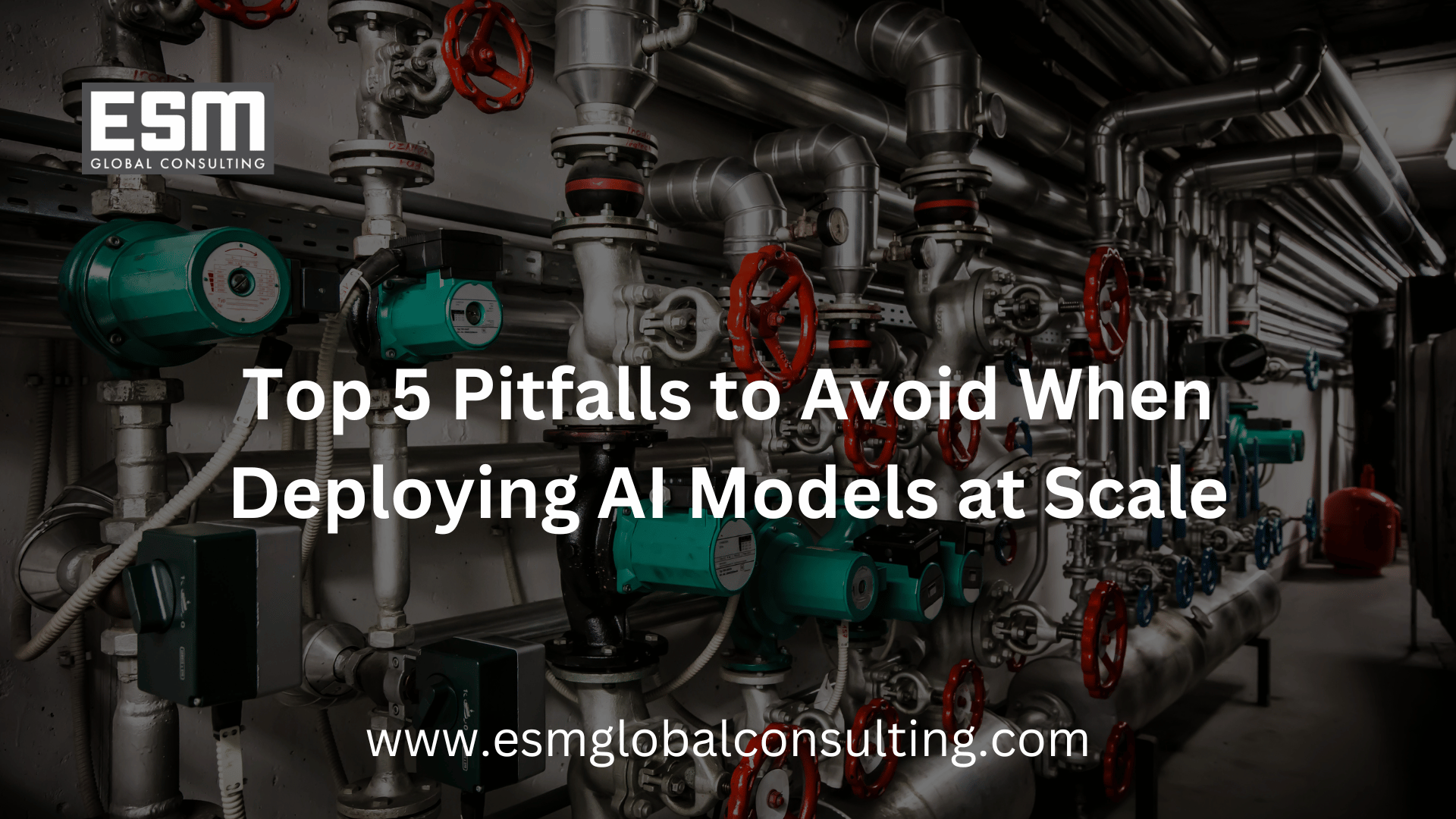Top 5 Pitfalls to Avoid When Deploying AI Models at Scale
Many organizations build impressive AI models in the lab only to watch them stumble in production.
Why? Because scaling AI isn’t just about bigger data or more GPUs. It’s about managing infrastructure complexity, governance, performance drift, and reliability, all at once.
At ESM Global Consulting, we’ve seen how small deployment missteps can snowball into major operational crises. Let’s walk through the five biggest pitfalls enterprises face when deploying AI models at scale, and how to avoid them.
Pitfall #1: Treating Deployment Like a Final Step
For many teams, “deployment” is treated as the finish line; the victory lap after model training. In reality, it’s just the beginning.
Models evolve. Data shifts. Regulations change. Without continuous integration, monitoring, and retraining, even the most accurate model will degrade over time.
Avoid it by:
Adopting MLOps frameworks for version control, CI/CD, and automated testing.
Building retraining pipelines that respond to drift and performance drops.
Viewing deployment as an ongoing lifecycle, not a one-time release.
ESM Tip: Think of AI deployment as a living process, not a product launch.
Pitfall #2: Ignoring Infrastructure Readiness
Deploying AI at scale means handling massive workloads, parallel processing, and distributed storage not just running a script on a laptop.
Many teams underestimate the need for scalable, fault-tolerant infrastructure. Without proper planning, you’ll face bottlenecks, high latency, and inconsistent performance across environments.
Avoid it by:
Using containerization (Docker) and orchestration (Kubernetes) for scalable deployments.
Leveraging cloud-native MLOps solutions to dynamically allocate resources.
Stress-testing systems under real-world load before going live.
ESM Tip: If your infrastructure can’t grow with your data, it’s not production-ready.
Pitfall #3: Neglecting Security and Compliance
AI systems introduce new security threats, from data poisoning to model inversion attacks. Yet, many organizations focus solely on accuracy metrics and skip security audits.
At scale, that’s dangerous. One compromised model can expose sensitive data or damage customer trust.
Avoid it by:
Encrypting model artifacts and using role-based access controls (RBAC).
Implementing secure API endpoints and auditing every model update.
Embedding AI governance frameworks for compliance (GDPR, NIST, or EU AI Act).
ESM Tip: If your AI isn’t secure, it’s not scalable; it’s a ticking time bomb.
Pitfall #4: Failing to Monitor Post-Deployment Performance
What happens after your model goes live?
Without continuous monitoring, performance degradation can go unnoticed for weeks. Over time, data drift, concept drift, or environmental changes quietly erode accuracy and decision quality.
Avoid it by:
Setting up real-time model monitoring dashboards for key metrics.
Automating alerts when performance falls below acceptable thresholds.
Logging predictions and outcomes for retraining and bias detection.
ESM Tip: What you don’t monitor, you can’t manage.
Pitfall #5: Scaling Without Governance
As models multiply across business units, keeping track of them becomes nearly impossible without centralized governance.
Lack of oversight leads to duplicated work, inconsistent data pipelines, and non-compliance risks. Enterprises end up with “AI sprawl”; models everywhere, accountability nowhere.
Avoid it by:
Creating a Model Registry with metadata, ownership, and version history.
Establishing AI governance boards for quality assurance and compliance.
Standardizing approval processes for model deployment and retirement.
ESM Tip: Governance turns chaos into control, it’s the backbone of sustainable AI scale.
Bonus Pitfall: Forgetting About Human Oversight
Automation is powerful, but blind automation is dangerous.
Humans must remain in the loop for model validation, ethical checks, and decision transparency. AI should augment, not replace, responsible oversight.
Avoid it by:
Involving domain experts in performance reviews.
Auditing model outcomes periodically.
Documenting decision logic for explainability.
ESM Tip: The smartest AI still needs a wise human watching over it.
Conclusion: Scale Without Sacrifice
Deploying AI models at scale is where innovation meets reality, and where shortcuts can cost millions.
The key to success lies in building resilience from day one: robust infrastructure, security-first design, continuous monitoring, and clear governance.
At ESM Global Consulting, we help enterprises navigate these complexities, turning AI deployment from a risky leap into a reliable growth engine.
Because at scale, it’s not just about deploying AI; it’s about deploying it responsibly.


